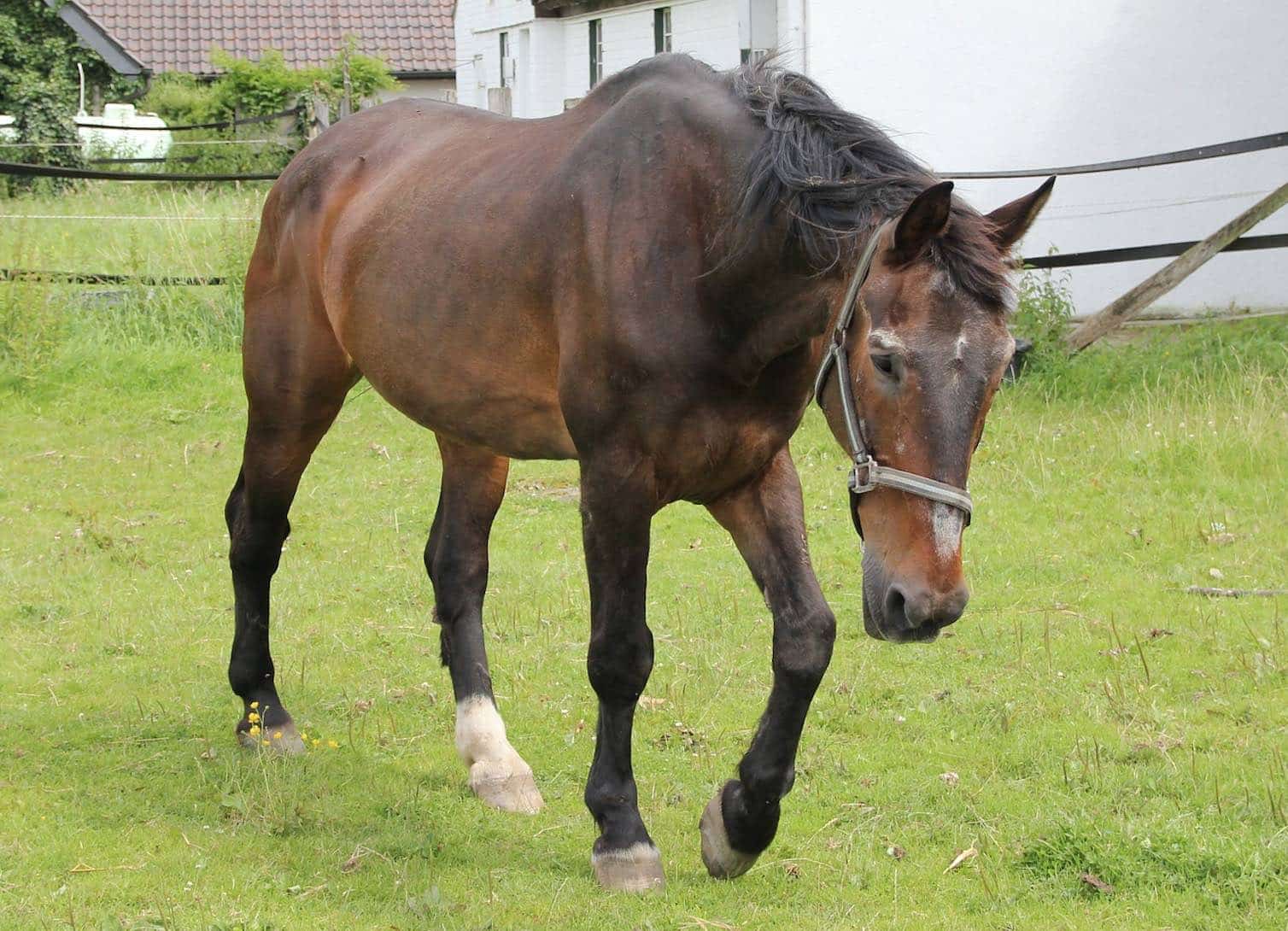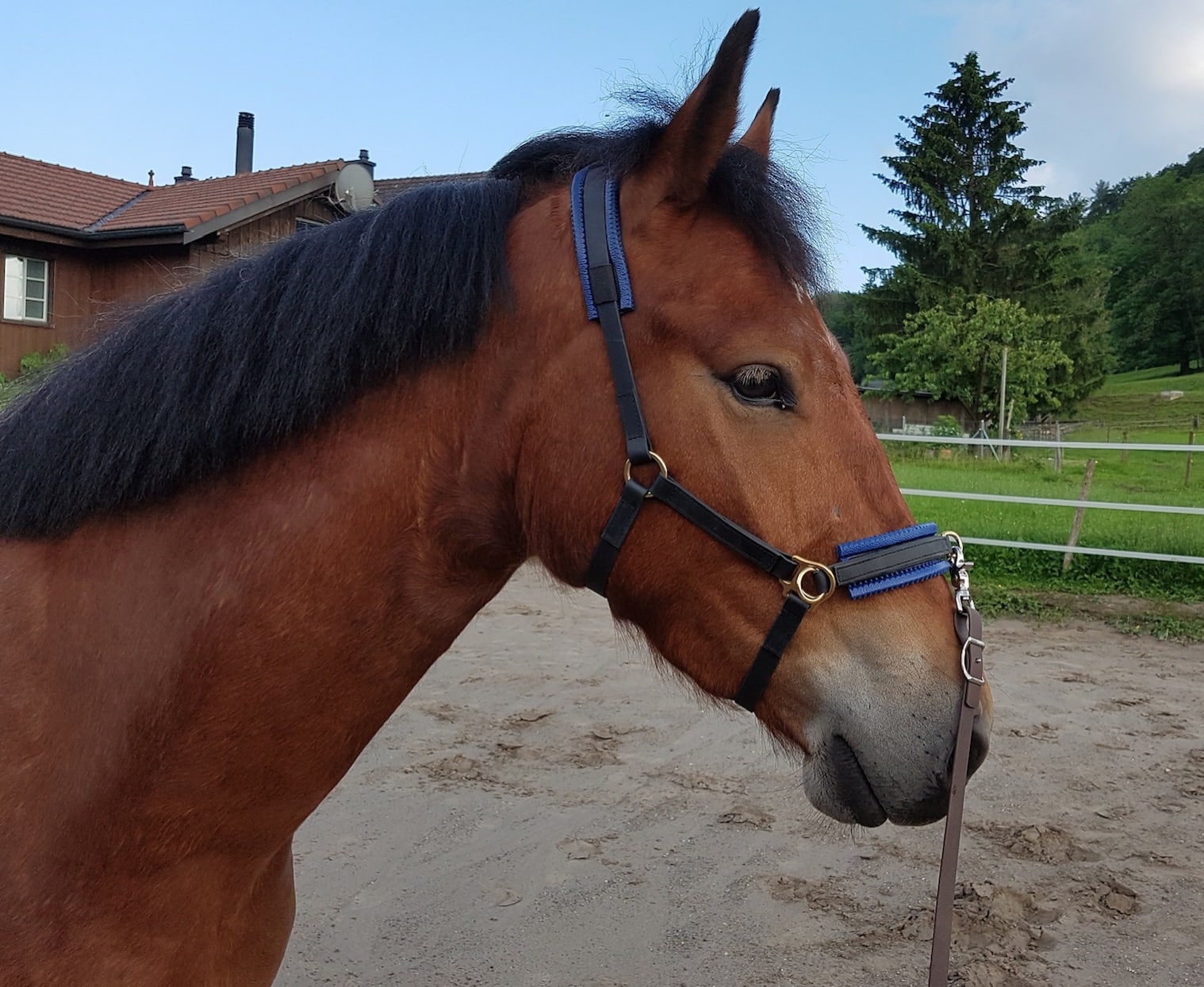This post is a little bit different from my usual articles because I’m here with Equine Angel. So get ready to cowgirl up, and learn about natural horsemanship 🙂
Some of you may know her through Google Plus or from her Leading to Liberty horse blog. She wanted to contribute some of her experience and views for us. Specifically, she’s going to tell us a bit today about what horsemanship is in her eyes:
“Horsemanship in my Eyes” by Equine Angel

In this post I want to talk a little about horsemanship IN MY EYES. This is simply my opinion based off of my experiences with horses. I would love to get feedback on what you guys think! And I’d love to answer any questions you might have in regards to my training or anything else.
Let’s begin!
When I train a horse, I will always want to use the least amount of pressure to obtain my end goal. The widely known and respected horse trainer Pat Parelli states, “The more you use the reins, the less they use their brains.”
…BUT I also say that just because I can do something doesn’t mean I necessarily will.
In other words, I may always train my horses with natural horsemanship. I’ll explain what I mean by that later on in the post. Thus my horses may know how to respond to my seat and leg cues and generally be able to let me ride them with no tack. That doesn’t necessarily mean that I am going to go on an organized trail ride tackless.
My general philosophy is that if you do use reins and a bit, these tools should be used as minimally as possible. A horse should not be controlled by its mouth. Rather, I strive for my horse to learn how to read my body language and feel the pressure from my body cues and move as horses naturally move: away from pressure.
There is another quote that I like: “There’s not really a guide through Liberty Horsemanship, you have to discover it yourself with your horse as a guide”.
I believe in this statement but it has to do with more than just liberty work with horses.
I believe each horse is an individual

And as an individual, each horse needs different attention and possibly different training methods.
Let’s talk about getting a horse to back up, for instance. If you are working with a horse that is difficult to back up and it seems like you’re not making any progress, think about changing how you’re asking.
I actually had this happen to me with a horse I used to own named Fury. I could get him to back up but he was very sticky. A lot of effort on my side only got a little bit of movement on his.
Two amazing friends and mentors to my fiancee, Anthony, and I suggested trying a different way. Their names were Julie and Scott and I was dumbfounded by their suggestion at the time.
A different way? What did that even mean?
I always used a shake of my stick and string along with body language to ask for a back up, including a walking forward motion if he did not respond. This is based on the Clinton Anderson method. But after trying some different things, I came to find out that all I had to do was shake my finger!
A shake of a finger was more effective than all of the energy I was putting into it before.
So that’s my short story, long. (Face palm! lol) Bottom line, each horse is one of a kind – just as are we. It is about time everyone started opening their eyes to that in the equestrian world.
Having a method is fine, as long as it’s not a one thing works for all method. Or worse, an ‘I beat you endlessly with a whip method’….
One trainer who has some pretty amazing methods is Clinton Anderson. In his training DVD’s he shows several ways of how to get the horse to complete the task at hand.
Liberty Work & Natural Horsemanship
I like to say that I use natural horsemanship and that I do liberty horse training so let me just specify what those words mean to me.
Natural Horsemanship…
It is not a one type fits all type of training at all. We all have our own opinion of what is okay vs. not okay, what is soft vs. too soft, what is hard vs. too hard, and finally what is natural and not natural.
“Natural” may mean different things from one person to another and that’s the main reason why I believe natural horsemanship is so widely misunderstood. People just don’t know how to do things differently.
I believe every horse is able to do natural horsemanship because that’s the concept of the training. It’s to bring out the natural instincts of the horse and harness them for training. It is the handler that needs to learn how to do something that they’ve never done before.
A phrase often associated with natural horsemanship is liberty horse training.
Liberty Training…

The definition for liberty in the horse world is more specific then the general definition of the english word “liberty” but they both come down to freedom. Liberty in horsemanship means the horse is free to NOT cooperate if they choose to. In short, they can run away if they like because they are free from tack.
There is no lead present in liberty work with horses, and in some cases a halter is not used either. The handler will generally use a training stick or crop – whatever you choose to call it.
Natural horsemanship IN MY OPINION works off of pressure by using the horse’s natural instincts, not by using fear, intimidation or force. Liberty training and natural horsemanship thus tie together in the sense that they both want the horse to be in the most “natural state of mind” possible.
Start from the ground up
Personally, I am NOT anti-tack. I have nothing against using bits, halters, or lead ropes. But I do not agree with those who use these things to control or force the horse to do their will.

I do believe it is VERY IMPORTANT to start working on the ground with a halter, lead, and usually a stick in order to clarify a request before starting ANY liberty training.
I believe this helps you and your horse get to know each other. Furthermore, this allows the horse to become familiar with the stick that you will be using and as a result gives you and your horse a great foundation together.
Afterword by Martina
Feel free to go visit Equine Angel’s blog: “Educating equine and Training tots; Leading to liberty” where she enjoys writing about her training techniques, discusses other people’s methods and shares her belief of how being at “liberty” with her horses is her end goal.

You can also go to her About Me page to learn a little bit about her or check out her Google Plus profile!
She’s a great source of information because she doesn’t try and change your mind. She just wants to educate those who want to TRY something new and different. Those of us who are always happy to try and find new ways to connect with and become closer with our horses.
There are indeed plenty of methods of horsemanship that work and of course people will disagree on what works best. Equine Angel states quite correctly that the trick is finding what method works best for YOU and YOUR HORSE. In a nutshell, that is what horsemanship is to her.
Let’s end off with this quote from Pat Parelli “If your horse says no, you either asked the wrong question, or asked the question wrong…”
Hope you all enjoyed this post! Here’s another one about Equine Angel’s horse, Fury that will teach you a lot about horses, particularly aggressive ones.
Comment below and let me know if you like our new feature on guest contributors, and of course if you have any questions, comments or requests 🙂
Happy training!

Wow you guys really know your Equestrian matters! I know for a fact my mum would love this site, so I’m gonna tell her about it right now – she’s always taught me about the importance of horsemanship and having the right equipment, so guaranteed she’ll be visiting your site a lot 🙂
Have you ever had any problems getting a bridle on a horse you’ve looked after or trained before?
I have before – the horse had quite a rough past, and he saw the bridle as a threat. But we eventually found a process of comforting him a lot while putting the bridle on and eventually he got used to it.
Hey Marley, yes I have had problems with this. I’ve never had a horse see the bridle as a direct threat as you describe, but I have had horses who simply didn’t like having the bit in their mouths. So when I would try and guide the bit into their mouths they would toss their heads, turn away and generally fuss with me a lot haha. I found that patience is the best medicine in these cases. Although sometimes changing the bit, checking for sores or other health issues in their mouths or using a gentle hand when riding (if their rider was too harsh on their mouths, they will come to associate with a bit negatively) could also be the solutions!
Thank you so much for your kind words and for recommending our article. We hope to hear from both of you in the future.
A good friend of mine would be very interested in your site. I must send this to her as she’s an animal lover and horses are her passion in life.
I love how you’ve written this post with a slightly different perspective, very powerful and interesting to read.
I will definitely have to show my friend. She’ll love this!
Hey Hannah! Aww that’s so sweet of you to recommend our article – I hope she enjoys it 🙂 She’s welcome to comment or contact me if she has any questions
Thank you so much for spreading the word about our article. Martina is an amazing writer and I was blessed with the opportunity to be a part of her blog. I hope to hear from you again.
Natural horsemanship would be the approach I would take were I blessed with the opportunity to participate in equestrianism. Given my strong bond to animals this also seems like the most humane. The tack technique seems like something I would feel uncomfortable participating in. Love the beautiful pics by the way!
Hey there!
Natural horsemanship is a wonderful approach and general mindset to have whenever training a horse. I mean of course we want to make our training as natural as possible so that it is both easier for us and the horse to figure out what to do and communicate together to achieve common goals.
As Equine Angel suggests, however, the main thing is to figure out your horse’s personality and through that, you’ll know what is most natural for him.
You mention you would be uncomfortable using the “tack technique”? I think perhaps you should reconsider the way you are thinking about this. There isn’t really a “tack technique” although there is different ways to use tack and other equipment for training. The fine line that Equine Angel excellently points out here is that tack and equipment can be a wonderful resource, especially when starting out but you never want to use it to force or bully your horse to do your will (as in the case of some aggressive bits when inappropriately used). Rather for example you want to use your stick as an extension of your arm to help you communicate with your horse.
Cheers,
Martina
Would you mind to further explain what you mean by tack technique..? I would love to answer any questions you might have.